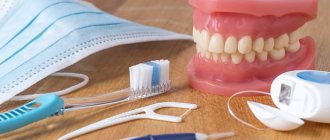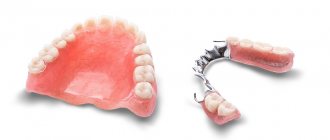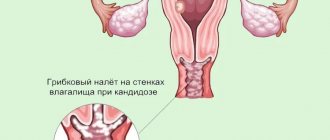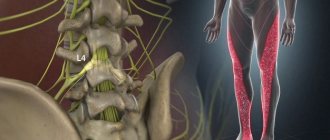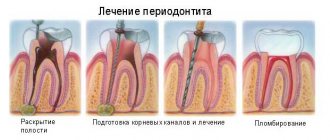Pathogenesis of renal edema
The mechanism of formation of renal edema is associated with the following phenomena in nephrological patients:
- massive loss of protein in urine;
- decrease in plasma albumin concentration;
- hyperlimidemia;
- increased movement of fluid from the intravascular space.
Patients have a high ratio of sodium and potassium in the urine, which indicates an imbalance of water and electrolyte balance.
The mechanism for the appearance of such a symptom is still not fully understood, but the characteristic picture indicates to the doctor pyelonephritis, glomerulonephritis. Filtration and excretion of urine are also impaired with kidney cysts, benign or malignant neoplasms.
What to do if your tooth hurts and your cheek is swollen?
Everything was fine in the evening, but in the morning the gums near the tooth were swollen, what to do in such a situation and why did the swelling appear? The reasons can be very different, from pericoronitis (inflammation at the apex of the tooth root), which did not manifest itself until a certain time, to difficult eruption of wisdom teeth.
What to do if your cheek is swollen from a tooth?
If painful swelling of the gums and cheeks appears, you should urgently make an appointment with a dentist. Only a doctor can accurately determine the cause of this condition and effectively eliminate it. The causes of swelling may be:
- Pericoronitis (tooth cyst) and its complication – gumboil, or periostitis.
- Difficulty in teeth eruption, most often observed with wisdom teeth (they are also third molars or “eights”).
- Injury to the tooth itself or the gums around it - for example, from too hard food or from an impact.
Whatever the reason, only an experienced dentist with accurate diagnostic equipment can identify it. Under no circumstances should you try to treat your teeth on your own, so as not to provoke serious complications and deterioration of your condition.
What to do if your wisdom tooth is cutting out and your gums are swollen?
The eruption of wisdom teeth in most people occurs with complications, this is due to the late appearance of “eights”, when the entire dentition is already essentially formed, and to the lack of space on the jaw. The jaw of a modern person has shrunk by about 10-12 mm over the past hundreds of years, so the third molar now does not always have enough space for normal eruption. That is why it cuts with difficulty, moves the remaining teeth and puts pressure on them, and often “goes” to the side, injuring the gums and mucous membrane of the cheek.
Therefore, there are often cases when a wisdom tooth comes out and the gums become swollen . Let's figure out what to do in such a situation? First of all, do a thorough cleaning with a brush and paste, if possible removing food debris not only from the interdental spaces, but also from the so-called “gum hood” (a flap of gum that covers the cutting molar). You can also rinse your mouth several times with antiseptic solutions (chlorhexidine, sodium-salt solution) or decoctions of herbs that have antiseptic properties (sage, chamomile flowers).
And, of course, you need to immediately contact your dentist. Most likely, the “gum hood” will need to be excised to make it easier for the tooth to erupt. If the situation is complex, the “eight” is cut crookedly or threatens the health of the entire dentition or neighboring units, it may require its removal.
Before visiting a doctor, it is advisable not to take painkillers so as not to complicate the diagnosis.
If you have a problem similar to that described in this article, be sure to contact our specialists. Don't diagnose yourself!
Why you should call us now:
- We will answer all your questions in 3 minutes
- Free consultation
- The average work experience of doctors is 12 years
- Convenient location of clinics
Single contact phone number: +7
Make an appointment
What not to do if your tooth hurts and your gums or cheek are swollen.
When the gum above a tooth is swollen, the first thing to do is brush your teeth and go to see a doctor. Here is a list of what not to do if your cheek is swollen from a tooth:
- Warm the sore spot. Warm compresses and poultices can only accelerate and aggravate the inflammatory process.
- Trying to “treat” the disease with folk remedies. Many of them simply do not have any effect, but there is also downright dangerous advice. Therefore, it is better not to self-medicate and consult a doctor.
- Rinse your mouth with alcohol or alcohol-containing products. A chemical burn to the mucous membrane is exactly what you are missing in addition to a sore gum.
The only thing that a person whose gums and cheeks are swollen, teeth hurt, or whose third molar is difficult to cut needs is qualified dental care.
Characteristics of edema of renal origin
Diseases of the urinary system are accompanied by edema with the following features:
- rapid swelling - in less than a day;
- the greatest intensity is on the face, under the eyes, on the arms and legs, and on the abdominal wall;
- when changing posture and active movement, the fluid shifts;
- the surface of the edematous skin is soft and pale.
Swelling of renal origin first appears on the face in the morning, but in acute pathologies and advanced chronic stages the patient may suffer from swelling around the clock.
The reasons for everything are trouble
The most common cause of finger swelling is injury.
In this case, along with swelling, symptoms such as pain, hematoma, bleeding, and difficulty moving can be observed. A bruise, cut, sprain, dislocation, fracture or burn can cause the phalanges of the fingers to hurt and swell. In addition, an insect bite can also be the “culprit” of swelling. It seems that for no particular reason the finger is swollen and hurts, but such symptoms can be associated with various forms of arthritis (infectious, post-traumatic, rheumatoid, metabolic and post-operative). It should also be noted that joints may be susceptible to osteoarthritis or degenerative tissue damage. Symptoms of the above diseases are accompanied by the appearance of swelling of the entire hand, an increase in temperature (at the affected area, less often the entire body), as well as redness of the skin areas. There are cases when in young men, psoriasis (chronic skin inflammation), as well as ankylosing spondylitis (characterized by damage to the joints in the sacroiliac joints and spine) occur together with rheumatoid arthritis. In this case, either both hands or only one of them can be affected by the pathological factor.
Symptoms of reactive arthritis, which appears after suffering from infectious diseases (genitourinary, intestinal, nasopharyngeal), may include swollen and red fingers on the upper and lower extremities. Arthrosis, in which the cartilage lining between the joints is destroyed and osteophytes (bone growths) appear, is accompanied by swelling and pain in the thumb, and in particular the bone on it. Oncological processes in tissues can also cause a tumor, these include:
- melanoma,
- basilioma,
- nevus.
Meanwhile, as clinical practice shows, it is rare to see new bone formations on the upper extremities.
Accompanying the tumor with symptoms of intoxication (head pain, vomiting, chills, nausea, high fever, thirst) may indicate the presence of erysipelas. The disease appears when the immune system decreases and group B streptococcus develops. Redness of the skin in the affected area is observed, heat is felt when touched and painful sensations appear.
With contact dermatitis, it swells in a specific place on the finger. This usually happens when the watch bracelet fits very close to the hand or the material of the accessory causes an allergic reaction. Swelling on the fingers can also be the result of a cold allergy, which is characterized by swelling, itching and rashes in the form of red spots.
Spasm in the blood vessels of the hands, which appears as a result of exposure to negative temperatures or an increased level of stress, is called Raynaud's syndrome. Reversible unpleasant sensations appear in the form of changes in skin color (at first it turns white, then turns blue and red), which are provoked by a decrease in blood circulation and its subsequent normalization. Because of this, swelling is observed, a burning sensation and pain are felt.
How to distinguish cardiac edema from renal edema
Swelling in diseases of the heart and blood vessels develops slowly - from several weeks to 2-3 months. Especially noticeable in the evening. First it appears on the legs and lower abdomen, the next stage is swelling of the abdominal cavity and enlargement of the liver, noticeable upon palpation of the abdomen.
Renal edema is typically localized on the face; as the disease progresses, it spreads to the extremities. The contour of the face sags and shifts, the skin becomes loose, and under the eyes it becomes bluish. The liver is not enlarged. Reliable differential diagnosis can only be carried out by a qualified doctor during an examination.
How to quickly remove swelling after alcohol?
If a person is wondering how to remove swelling after alcohol, it is worth saying right away that it is possible to help the body cope with the problem. First of all, you need to give up the idea of getting hungover . Alcohol should be excluded. The next morning after a feast, you can drink brine or water, but not alcohol. Even beer is excluded. Next you need to detoxify. Activated carbon, Sorbifer and other absorbents help cleanse the body and return it to normal.
But what can you do to remove accumulated water from tissues? For this purpose, it is wise to drink a diuretic and various herbal teas. Chamomile, calendula or St. John's wort help well. Green tea also helps, especially with honey and lemon. It relieves hangovers and relieves puffiness under the eyes.
If severe swelling occurs after alcohol, and it is expressed locally, for example, under the eyes, then you can try compresses. Chamomile or black tea can be applied as compresses. It is advisable to alternate warm and cool compresses to enhance the effect.
Some vegetables and herbs help a lot. You can cut potatoes or cucumbers into rings and apply the circles to the swollen area. If you have fresh parsley, you can crush it and use it in the same way. It is also better to grate raw potatoes, chop them, and then use them for compresses. After all, the juice will then stand out better.
One recipe with parsley involves chopping it and soaking it in green tea, which has already cooled. After 20 minutes the mixture can be applied. It is kept for about 15 minutes, after which the restoration of the problem area should begin. By the way, the skin will also become fresher .
Associated symptoms
Diagnosis of renal edema begins with an assessment of the clinical picture. For the urological profile of the disease, it includes the following complaints:
- difficulty urinating;
- lower back pain – shooting and pulling;
- decreased daily urine volume;
- weakness, lethargy.
Laboratory diagnostic results indicate proteinuria, changes in sodium and potassium levels. Daily samples show a reduced volume of diuresis.

